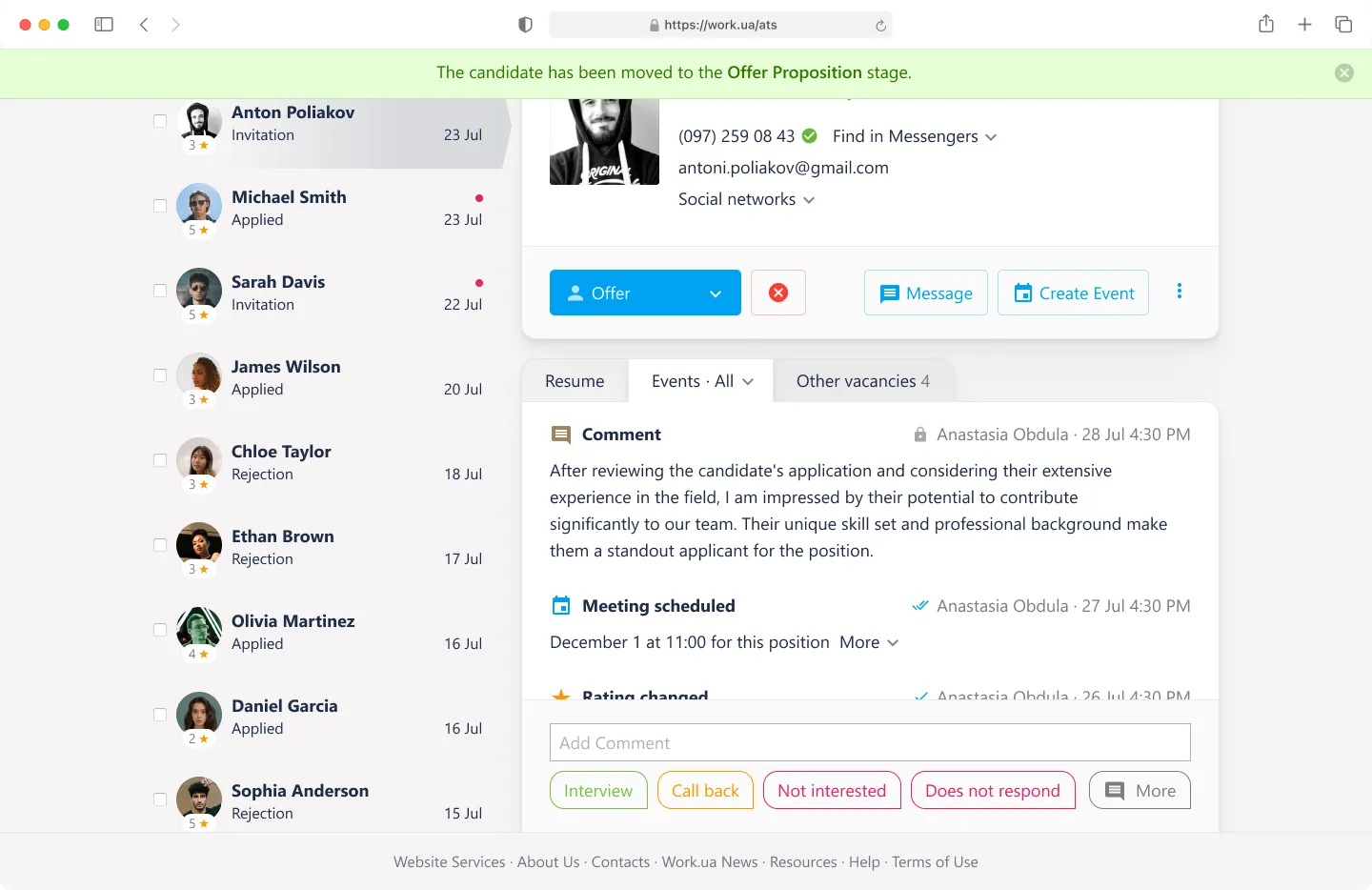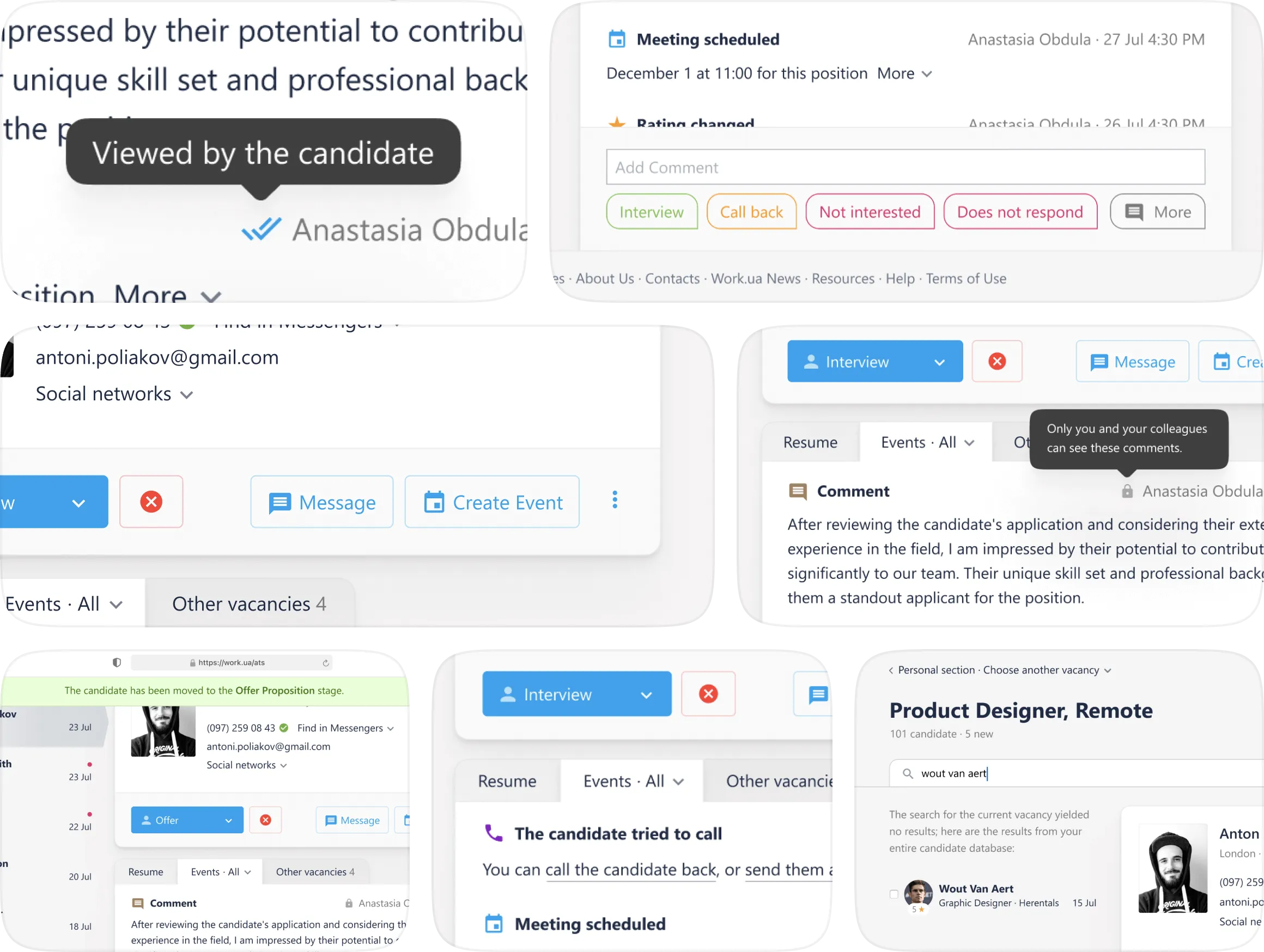How user research took Work.ua’s HRM system to the next level
A case study on how qualitative user research transformed the HRM system at Work.ua, resulting in improved UX and measurable growth.

Background
Our team at Work.ua developed an HRM system based on standard responses companies received from candidates. It quickly proved itself among users and received plenty of positive feedback.
However, after the initial launch, we found ourselves at a crossroads: the system was working well, but we weren’t sure where to go next. We could keep adding new features, but I felt we were missing something fundamental — the insights and perspectives of our real users. We weren’t just another HRM; we were an entire ecosystem of candidates, résumés, job postings, and responses. I wanted to figure out how to make the product as valuable as possible for our specific audience.
Initiative
I proposed that we shift our perspective from purely quantitative metrics to a focus on quality. We were running regular A/B tests, but they didn’t give us the full picture.
I introduced the Double Diamond 1approach to the team:
- Prepare a set of interview questions.
- Gather a group of 10–15 diverse users.
- Conduct in-depth conversations to learn not just what they said, but how they actually worked.
At first, getting «out into the field» was challenging, but it was worth it. We collected a large amount of both verbal and non-verbal insights. Often, what users said and what they actually did didn’t match — and these gaps sparked some of my best ideas.
Analysis and Collaboration
We analyzed the interviews as a team and involved stakeholders and people from other departments. This broadened our perspective and helped generate additional ideas and hypotheses.
We then applied an evaluation matrix 2to assess each idea by implementation complexity and potential impact, which allowed us to quickly roll out the most effective changes.
Results

After release, the system became not only easier and more pleasant to use but also better at supporting recruiters’ daily workflows. Key updates included:
- Quick comments for faster information exchange.
- More convenient internal communication between multiple recruiters within the hiring process.
- Scheduled meetings.
- Candidate view tracking for submitted applications.
- Notifications about candidate call attempts.
- Smarter candidate search with suggestions from the entire database.
- Event filtering by category.
These updates received strong positive feedback from users and led to measurable improvements:
- Comment usage increased by around 20%.
- Recruiters moved candidates through hiring funnels more often thanks to improved navigation.
- Message sending increased by 13%.
Conclusion
This experience taught me that even small changes can lead to significant results if you approach problems systematically and aren’t afraid to talk to users directly. The most valuable insights often come from where quantitative data meets a deep understanding of people’s real needs.
Footnotes
-
Double Diamondis the name of a design process model popularized by the British Design Council in 2005. ↩
-
Decision matrixis a list of values in rows and columns that allows an analyst to systematically identify, analyze, and rate the performance of relationships between sets of values and information. ↩